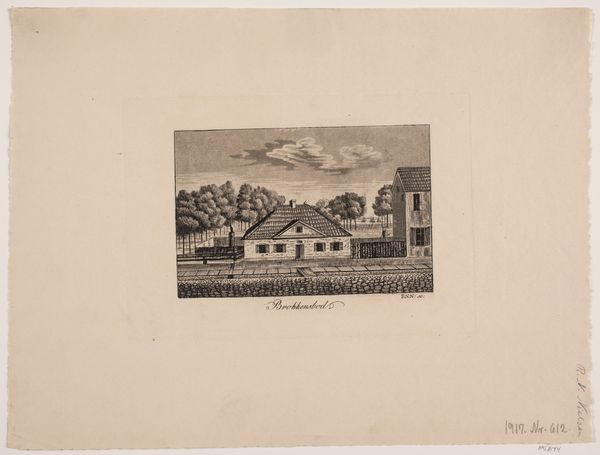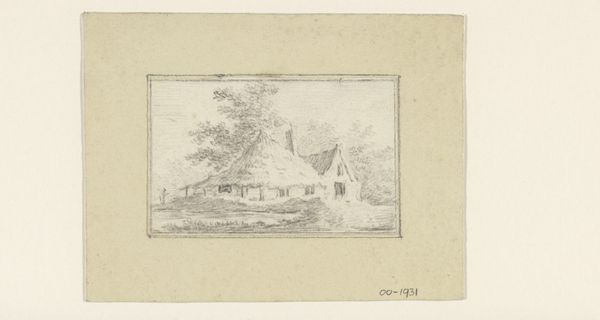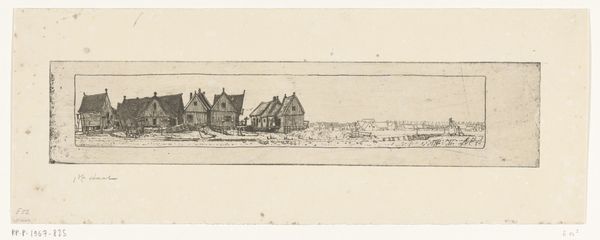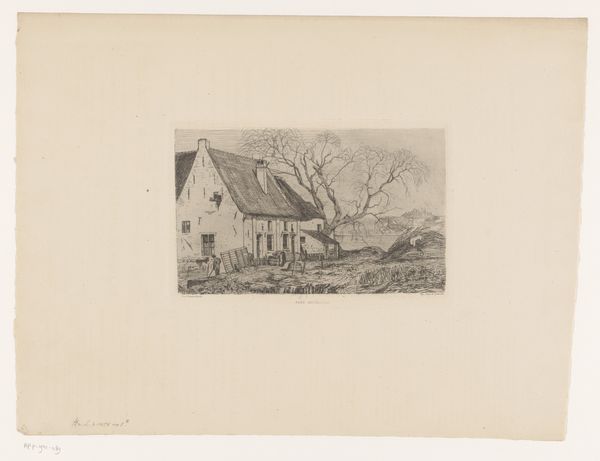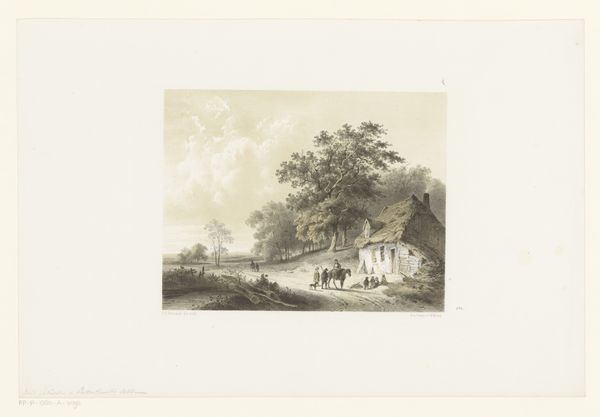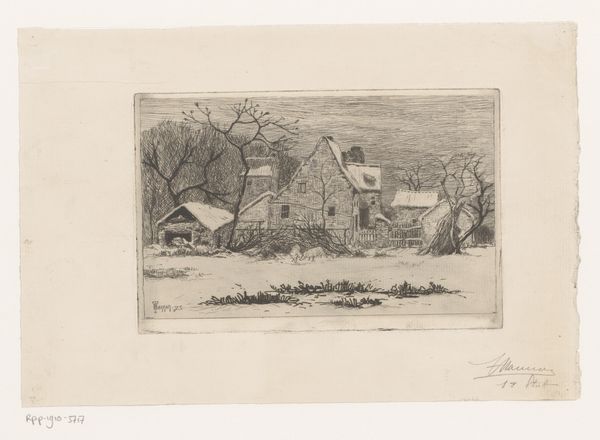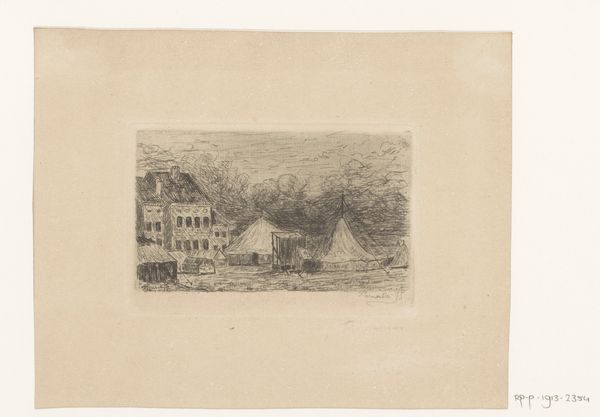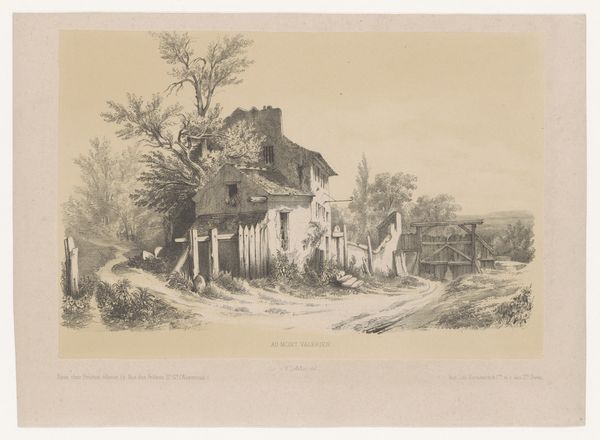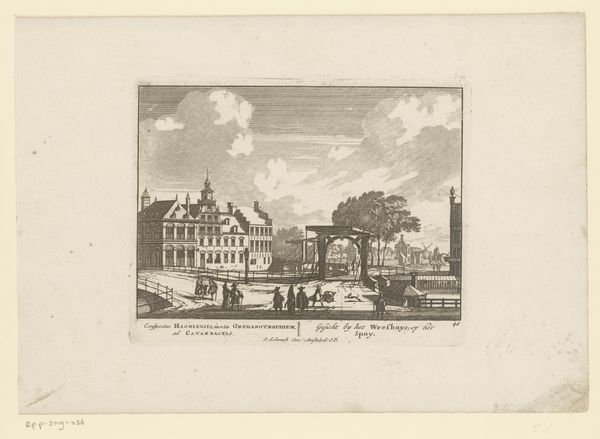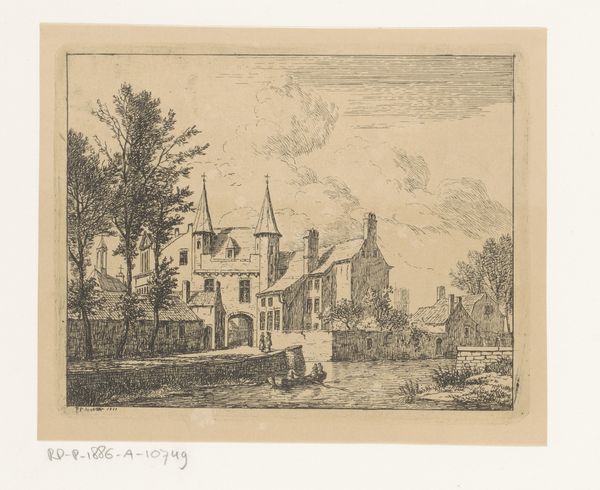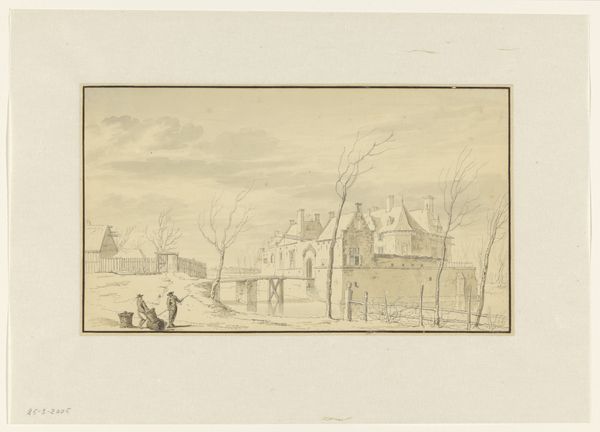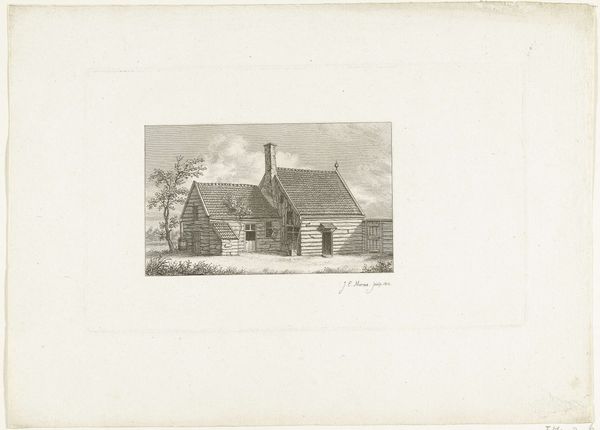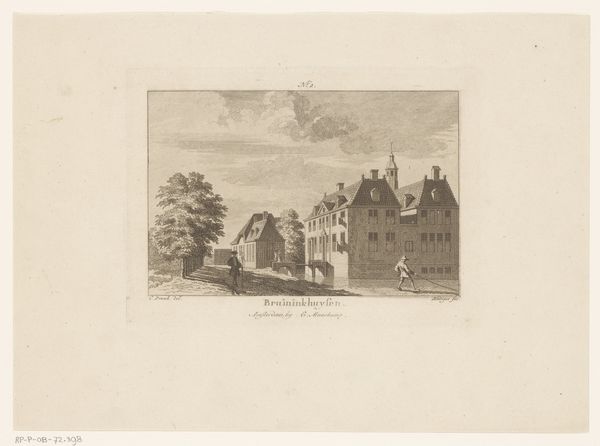
print, etching, engraving
# print
#
etching
#
old engraving style
#
genre-painting
#
engraving
#
realism
#
building
Dimensions: height 112 mm, width 162 mm
Copyright: Rijks Museum: Open Domain
Editor: So, this is “Façade of a Building of the Upholsterers’ Guild” by Jean Théodore Joseph Linnig, from 1868. It’s an etching. There's something so orderly, and even a little severe, about this facade. What draws your eye to it? Curator: Well, firstly, the facade *is* the message, isn't it? This isn't just any building; it's a proud declaration of the upholsterers' identity. Consider the clock tower – time, work, the rhythmic cycle of craft. How does that read to you? Editor: I suppose it’s like a reminder of their dedication to the profession, to precise work done on a schedule. But isn't it interesting that the people at the door seem so small, almost insignificant, in comparison to the building itself? Curator: Ah, the human element dwarfed! Indeed, that interplay between individual and institution speaks volumes. What symbols might the architect have borrowed from classical or even religious architecture to lend authority to this guild building? Think of the gables, the symmetry… Editor: Now that you mention it, the gables almost resemble stylized pediments, like those found on classical temples. Perhaps it suggests the guild is a pillar of society, a foundational structure? Curator: Precisely! It's fascinating how symbols are recycled and reinterpreted across time, isn't it? Here, a centuries-old architectural vocabulary is employed to convey the guild's importance in a modern, industrializing world. What lasting impression does it leave you with? Editor: I'm struck by how carefully designed the image is. It presents the guild as established, reliable, and a cornerstone of civic life, which might reflect their actual status and aspirations in that period. Thanks for the insight. Curator: It was my pleasure; observing how artists negotiate cultural memory with such visual eloquence makes it all the more enriching.
Comments
No comments
Be the first to comment and join the conversation on the ultimate creative platform.
